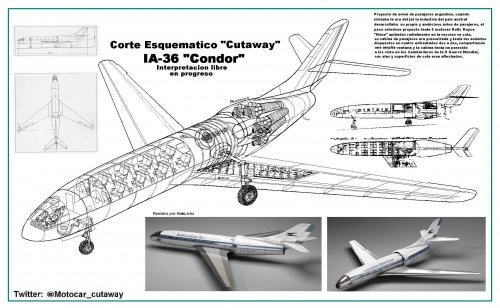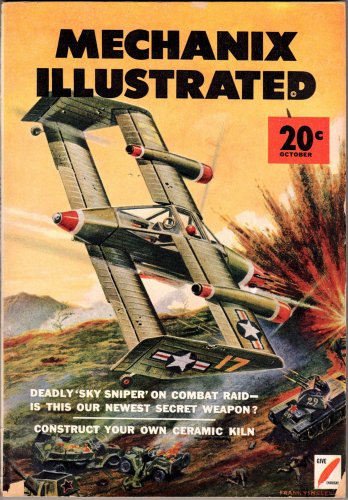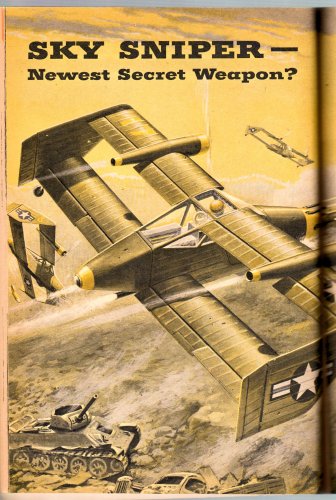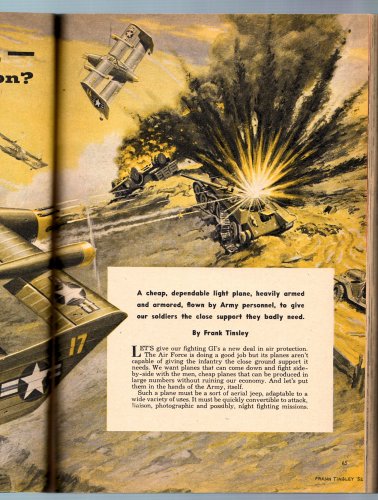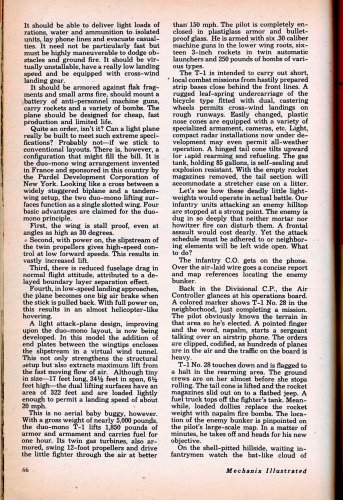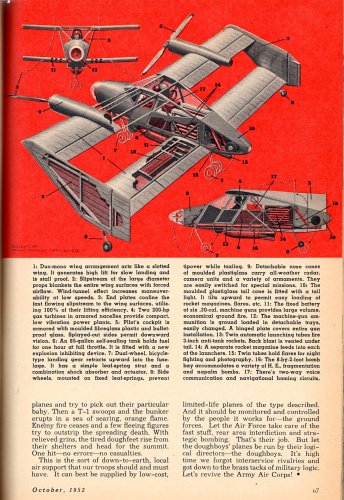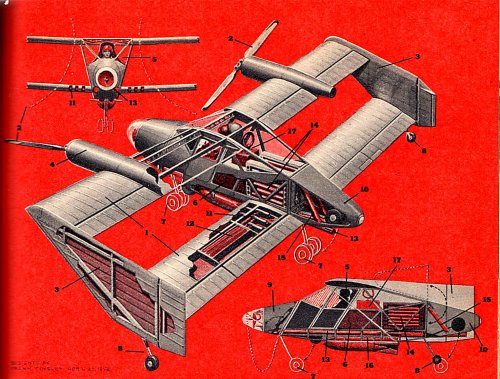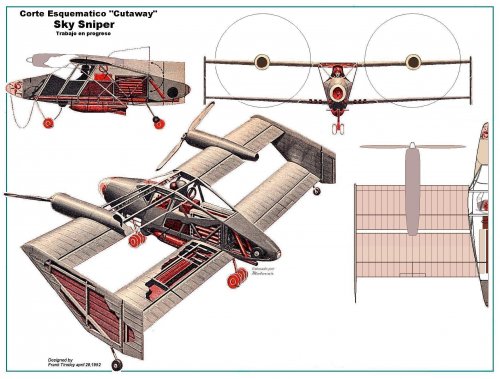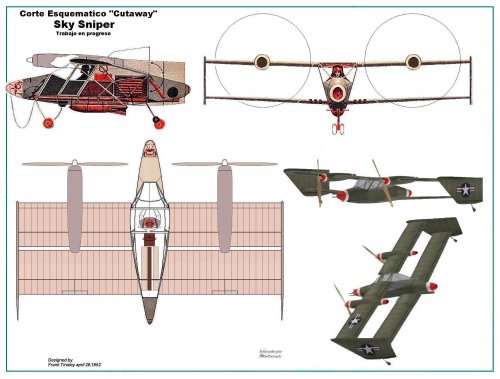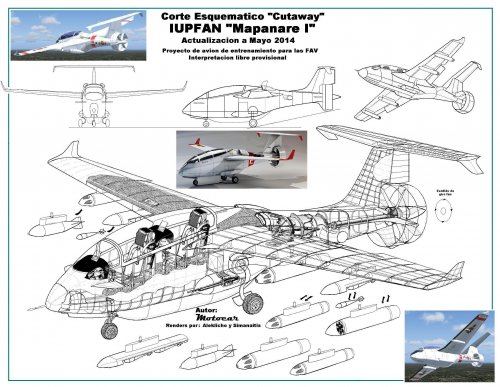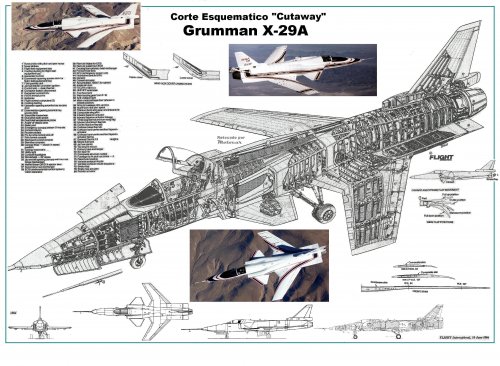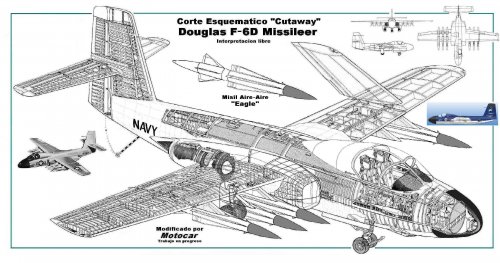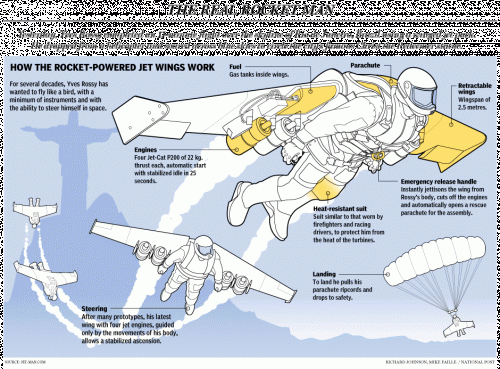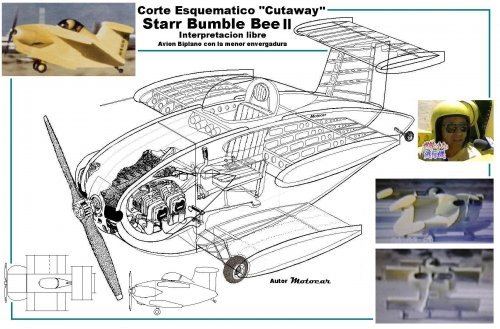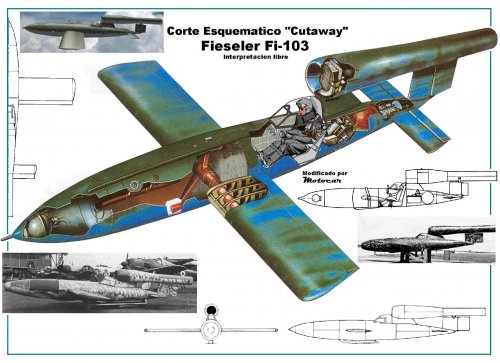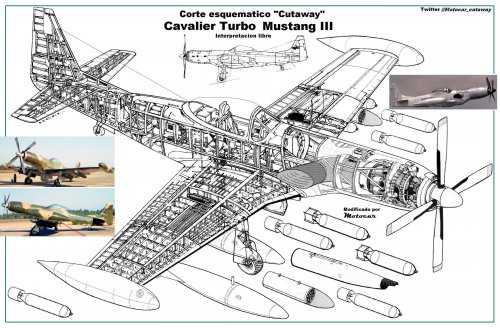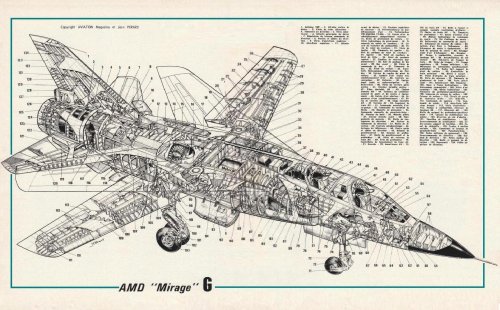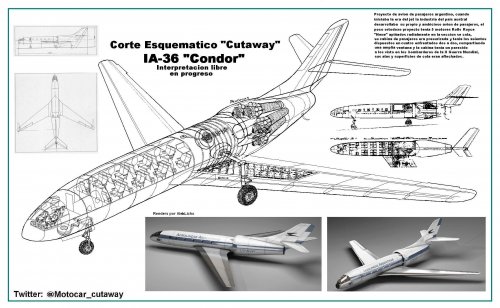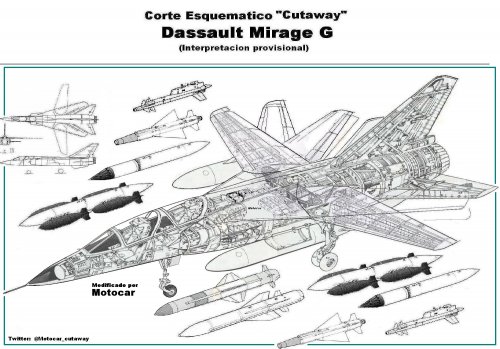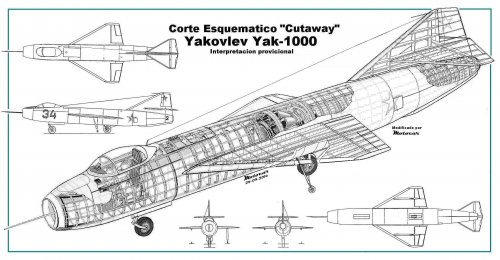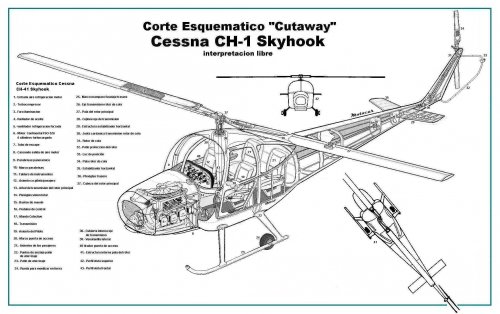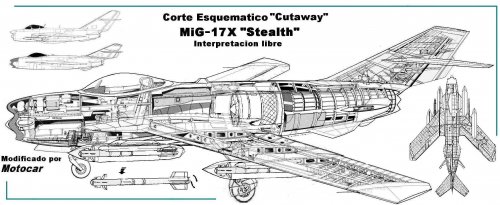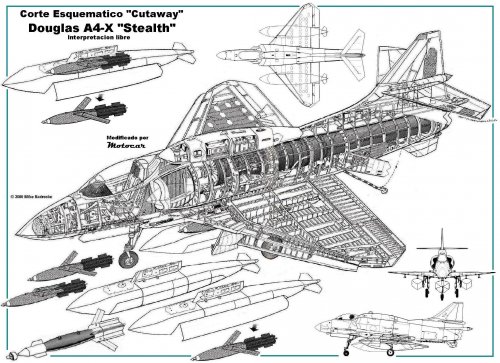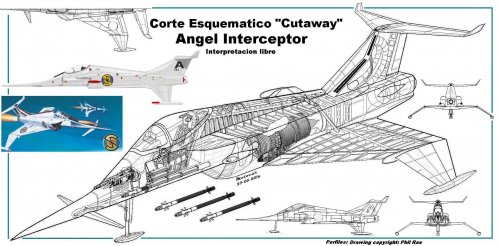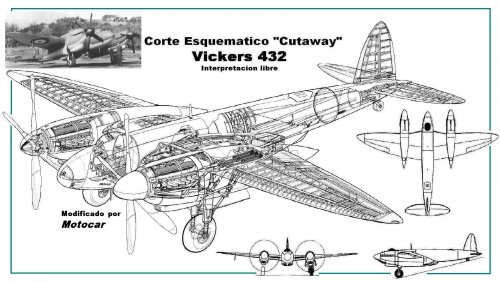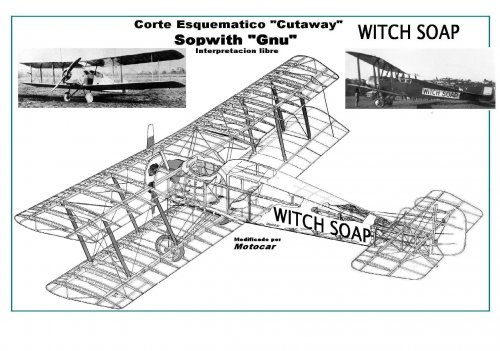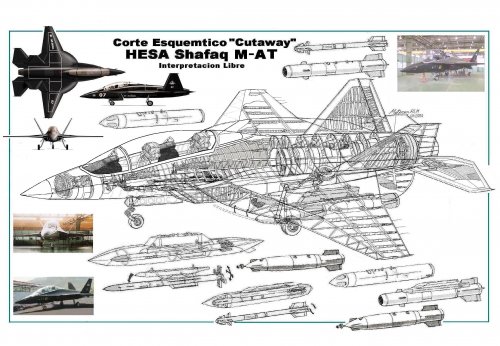You are using an out of date browser. It may not display this or other websites correctly.
You should upgrade or use an alternative browser.
You should upgrade or use an alternative browser.
Motocar's Cutaway drawings
- Thread starter Motocar
- Start date
Motocar
I really should change my personal text
- Joined
- 16 May 2014
- Messages
- 1,079
- Reaction score
- 1,132
Cutaway IA-36 "Condor" project airliner jet far ahead of his time in, had wings and tail surfaces swept an interior disposition of the passenger cabin more similar to that seen in the carriages of a train groups 4 seats facing two to two with a large common window, the cockpit had a similar to the bombers of the Second World War, known as type "Greenhouse" in later designs step to resemble more that of the DeHavilland Comet windshield its retractable landing gear had sun wheel at each station and the main wheels basculaban (I do not understand the reason for this) tail was cruciform although in the initial drawings was in "T" would be powered by five engines Rolls Royce "Nene" huddled in a very unorthodox drive installation clustered around a very strong tubular stand leaning against the bulkhead pressurization stabilized by five supports generally very clean and graceful lines that did not see the light plane, this cut Schematic continuous since it is a preview of work in progress to lack of data there are many speculative elements, for it counted with the collaboration of forista Aleklicho I make three beautiful render the same, as I included the fuzzy side cuts signature, unique guidance material available at the time. author Motocar
Attachments
- Joined
- 18 June 2009
- Messages
- 1,412
- Reaction score
- 2,494
Motocar,
In answer to your request for the "Wings in Tandem" airplane information, here are scans of the "Sky Sniper" from the October 1952 issue of Mechnix Illustrated. The instant I saw it I thought it would make an interesting flying model and I've kept this magazine in my library for many years waiting for the day I would build one.
What I ask in return is that you or perhaps CiTrus90 would provide me with a set of 3 or 6 view drawings that I would then use to build a flying model.
Enjoy,
Richard
In answer to your request for the "Wings in Tandem" airplane information, here are scans of the "Sky Sniper" from the October 1952 issue of Mechnix Illustrated. The instant I saw it I thought it would make an interesting flying model and I've kept this magazine in my library for many years waiting for the day I would build one.
What I ask in return is that you or perhaps CiTrus90 would provide me with a set of 3 or 6 view drawings that I would then use to build a flying model.
Enjoy,
Richard
Attachments
Motocar
I really should change my personal text
- Joined
- 16 May 2014
- Messages
- 1,079
- Reaction score
- 1,132
Mr. Richard N greetings and many thanks for valuable contribution, personally had years looking for that article on the internet without success, that's the good thing about forums where we get thanks to the valuable collaboration of other forum members like you with your contribution allow us to create or recreate these model airplanes that remained in artistic performances, in my case I perform retouching, modifications and some original to give that vision who never had the same, sometimes I've been criticized for realize them but are more satisfactions received the negative critiques that will always be well received to improve every day my modest work, count on the profiles and later deliver them an original Cutaway of this project, ahoara tale with enough to do it with more fidelity data, the friend Citrus90 such I can help us with some render again thank you very much for this valuable contribution. Motocar
Maracay, Venezuela Motocar
Maracay, Venezuela Motocar
Motocar
I really should change my personal text
- Joined
- 16 May 2014
- Messages
- 1,079
- Reaction score
- 1,132
Motocar
I really should change my personal text
- Joined
- 16 May 2014
- Messages
- 1,079
- Reaction score
- 1,132
These images are the result of the response from Richard N friend who saw fit to raise the full article Mechanix Illustrated magazine in its edition of October 1952, only furnishes a brief touch to provide profiles to ask me to make a model couple flying over this little-known project Sky Sniper , soon effected, a free interpretation cutaway thanks to the data provided by Richard N
Best regards, Motocar
Best regards, Motocar
Motocar
I really should change my personal text
- Joined
- 16 May 2014
- Messages
- 1,079
- Reaction score
- 1,132
Later at the end of the schematic section of Sky Sniper makes the version with machine guns in front, in fact that is what I was doing before having the valuable data of their contribution , again thanks Richard N, for now I leave you alone profiles retouched .
Motocar
Motocar
Attachments
Brings back memories of playing x-29 Retaliator during my lunch breaks on the works CAD stations. I was the only one who got caught by the boss. 
Great illustrations as always
Bugatti-110 fighter version???
Great illustrations as always
Bugatti-110 fighter version???
Motocar
I really should change my personal text
- Joined
- 16 May 2014
- Messages
- 1,079
- Reaction score
- 1,132
Motocar
I really should change my personal text
- Joined
- 16 May 2014
- Messages
- 1,079
- Reaction score
- 1,132
Cutaway Homo Avis , draft a jet back , published by the magazine Popular Mechanics in July 1982 page 112 , nowadays Yves Rossy flies with wings on a similar concept but not take off or land on its own
Success
Success
Attachments
Motocar
I really should change my personal text
- Joined
- 16 May 2014
- Messages
- 1,079
- Reaction score
- 1,132
Cutaway Starr Bumble Bee II, the little biplane orthodox, Mr. Starr design to achieve the Guinness Book record of the plane piloted smaller ever flown, it made a unique and last flight on May 8, 1988 almost ended tragically when during its short flight engine failure and crashed, Starr who was going to control survived with serious injuries, his record still stands, some years ago I saw a new proposal for a new attempt to break the record, being the even more radical to resort to a biplane gliding, apparently attempt came only to the construction of the prototype which lacked the little engine, a feat not excenta high risk of there that still matenga, with only one major design 5'6 "inches or 1.68 Mts, with a longuitud of 8'10" inches or 2.7 meters and a height of 48 "inches or 1.25 Mts, weighed 574 pounds and had a top speed of 305 km/h with very high loss rate at 139 Km/h the engine at Continental C85 opposed 4 cylinder 85 hp (63 kW) was sustaining fuselage airfoil shaped more "Fences" the entire length thereof, a Minimum cockpit bubble-top, horizontal surface in "T" fence around the edges as in its very short wings, author * "Motocar" provisional drawing made with the limited information available
Attachments
Motocar
I really should change my personal text
- Joined
- 16 May 2014
- Messages
- 1,079
- Reaction score
- 1,132
Cutaway Fieseler Fi-103, the V-1 "Manned bomb", an idea that managed to reach the construction of prototypes and training gliders, the concept was simple to place a pilot to take the V-1 manned to the side of the target to proceed to launch parachute, managing to destroy an important target, reason and reality set in and the idea of using young German pilots in such missions was canceled, but if it is unlikely bantante his driver managed to evacuate successfully but when has the air intake the pulsoreacctor just above his cabin, author unidentified Motocar modified to recreate the Fieseler Fi-103
Attachments
Motocar
I really should change my personal text
- Joined
- 16 May 2014
- Messages
- 1,079
- Reaction score
- 1,132
Cutaway Cavalier Turbo Mustang III, was the response of the signature for the requirement of a plane cheap COIN, to that I change the engine into a Rolls Royce Dart, the result for many the ugly mas of all the versions losing the line elegance of his fuselage, in that desaparecio the heavy radiator and a knob mas narrow and elongated. Author WEAL and modified by Motocar
Attachments
Motocar
I really should change my personal text
- Joined
- 16 May 2014
- Messages
- 1,079
- Reaction score
- 1,132
The Wave
ACCESS: Restricted
Stunning! Absolutely fantastic, I still have no idea how you people do these, they're just so detailed!
- Joined
- 27 December 2005
- Messages
- 17,749
- Reaction score
- 26,393
Motocar is not making the cutaways, he's scanning, tidying and modifying them. The original artists (Jean Perard in the last example) will often have visited the production line, viewed the actual aircraft, obtained details from the manufacturer, etc.
Motocar
I really should change my personal text
- Joined
- 16 May 2014
- Messages
- 1,079
- Reaction score
- 1,132
Clarification, I retouch or modify some works of great artists just to replace lost parts when they are broken or images bad scanned or recreate no existing models based on these, such as tandems or other models, I have also developed my own schematics cuts as mere speculation in the absence of reliable data as was the case Qaher Iranian F-313, Shafaq, the Starr Bumble Bee, the MiG-8 Ukta, IUPFAN Mapanare I, Aircar Sky Technology, Trautmann "Roadair", Heinkel He-178 V1, 452-2 Ikarus, IA -36 Condor, Delta Horten IA-36 and many other models, there is never the pretense on my part to be the author of any model that is another artist, in fact to be in this section Artwork is in order to share with all friends who like my modest work aviation modification and adjustments, on the other hand in my country did not get many of these technical publications and aircraft factories have (as in many other countries)
Responding to the curiosity of Vladimir forista my works performed with the simple "Paint" tool available on all computers that use Windows, greetings and hope I have clarified some that another misunderstanding. Motocar
Responding to the curiosity of Vladimir forista my works performed with the simple "Paint" tool available on all computers that use Windows, greetings and hope I have clarified some that another misunderstanding. Motocar
Motocar
I really should change my personal text
- Joined
- 16 May 2014
- Messages
- 1,079
- Reaction score
- 1,132
Motocar said:Repost Cutaway IA- 36 " Condor " by Motocar to recreate the failed project jetliner Argentina in the era of Peron , based on the very limited information on the project
An engine fire or loss of a turbine blade would be more than a little interesting.
Motocar
I really should change my personal text
- Joined
- 16 May 2014
- Messages
- 1,079
- Reaction score
- 1,132
Motocar said:Soon effected, a modification to recreate the Dassault Mirage G of higher resolution
It would be catastrophic if it happened like in a De Havilland with their engines inside the wings, now that would be interesting drive installation for a modern turbofan and create a single engine with that configuration, you might encourage me and make soon.
thefrecklepuny
ACCESS: Confidential
- Joined
- 19 January 2008
- Messages
- 123
- Reaction score
- 93
Looks like a French MiG-23 Le Flogger (or Le Frogger)......I'll get my coat.
Motocar
I really should change my personal text
- Joined
- 16 May 2014
- Messages
- 1,079
- Reaction score
- 1,132
Cutaway Yakovlev Yak-1000, the experimental aircraft whose wing had been a source of research TsAGI, the wings of low elongation, this drew attention for being "Romboidal" really rather closer to a delta triangle, its advantages were that it would be easier to build and more solid, with very low parasitic resistance and favoring flying beyond the speed of sound, providing exceptional performance for the time, with all these advantages was significantly increased in the turning point in history of aviation technology. Yakovlev and decided to try. for what custom design and construction of a prototype, had thought of building it around an engine AL-5 (IA-5) which would give a maximum speed of Mach 1.7, to demonstrate the problems were not resolved for this immature powerplant was decided to go ahead with a different engine RD-500 (Russian copy of the Rolls-Royce Derwent) of only 1,591.72 Kgs push and install the center fuselage elongated cylindrical shapes, their overall performance declined only 1,100 km / h but exceeded other signature product Yakovlev Yak-23 "Flora" at 200 km / h of maximum speed, with its air intake located at the front, little further back very close to the same cab, a windscreen without reinforcements in one piece, with a low, aerodynamic housing bubble type, "rhomboid" wing comezaba a little behind the cab with large spoilers large area had to medium size which had compensators, had a light rail small retractable wheels with stability as the main landing gear was located under the engine, just where began the long nozzle gas discharge, the wheel is partially exposed as approximately 1/4 of its size, with two small fairings both enhance its aerodynamics without causing increased drag (which would have saved a lot of trouble Messerscmitt me-163 Komet and complicated patin) the engine was slightly off up being located above the axis of the fuselage, for the same reason facilitate partial retraction main train their tail surfaces in the same "rhomboid" scheme and the horizontal stabilizer located almost 1/4 of the total eigh t drift, something curious that it was noted is that it apparently had to move completely capaciadad (integrally) with movement of the rear wings, this is something that thought had not been developed by the Soviets, given that the MiG-15 and its versions Bis not set up this arrangement and instead rival the North American F-86E's amount and flew in the skies over Korea during the war, significantly improving its handling and performance at very high transonic velocidadaes. The Yakovlev Yak-1000 did not reach even to take flight, did dailies, with no fewer problems because of bicyclo that made it quite unstable train, tests showed that their would require wings speeds of up to thought, their ground tests were conducted in February 1951, its aerodynamics was the basis for the development of anti-ship AS-2 Styx missile rocket engine but now with the tail surfaces at the rear of the fuselage with negative dihedral, becoming one of the most prolific anti-ship missiles history, still being constructed in china in much improved versions more powerful, thanks to a new jet engine air intake in the middle section of the fuselage. Author Aviagraphica and cutaway modified by Motocar to recreate the Yak-1000 with the limited information available.
Attachments
Motocar
I really should change my personal text
- Joined
- 16 May 2014
- Messages
- 1,079
- Reaction score
- 1,132
Cutaway Cessna CH-1 "Skyhook", first and only helicopter produced by the successful signing of light aircraft during the fifties, descended design other signs Seibel and his model S-4B, it had a Continental engine FSO -526 6-cylinder turbocharged front moving a transmission cam whose main rotor passed through the cabin without major problems, had an excellent view for both the pilot and the pasjaeros thanks to its large panoramic windows, also had a simple main rotor two pals like the tail capacity of 4 people comfortably installed in individual seats, the horizontal stabilizers had a very light arrow, incorporated a landing skid to which he could install some small wheels for easy transfer in land, its engine had a system of forced air cooling, explicable by being a helicopter and lack of good ventilation during stationary flights, some copies were purchased by the US army where he was known as CH-41, also it was sold the Aera of Ecuador Force and Iran for his army, both in small quantities, unfortunately this helicopter Cessna can not get orders expected which caused the US firm does not produce another helicopter in the future, unless a driven prototype for a turboshaft that not pass the evaluation stage as a prototype, author Motocar free interpretation.
Attachments
Motocar
I really should change my personal text
- Joined
- 16 May 2014
- Messages
- 1,079
- Reaction score
- 1,132
Motocar
I really should change my personal text
- Joined
- 16 May 2014
- Messages
- 1,079
- Reaction score
- 1,132
Cutaway Angel Interceptor , in a version of free interpretation in classical technique schematics cuts the Tv series Captain Scarlat by Gerry Anderson, here I upload a pre - premiere for the enjoyment of the group, then edit image to clean up and improve some details and add some earrings, author Motocar Monday 23/05/2016 profiles Phil Rae
Coming Motocar perform this same model in an interpretation of how it would be if using today's technology more realistic Angel Interceptor.
Coming Motocar perform this same model in an interpretation of how it would be if using today's technology more realistic Angel Interceptor.
Attachments
Last edited:
Love the last one! 
Motocar
I really should change my personal text
- Joined
- 16 May 2014
- Messages
- 1,079
- Reaction score
- 1,132
Cutaway Vickers Type 432, Project hunting high altitude, designed to stop raids by reconnaissance aircraft high rise Junkers Ju-86P, I can not move from the prototype stage, here I leave the speculative cutaway of the same modified by Motocar to recreate this failed project
Attachments
Motocar
I really should change my personal text
- Joined
- 16 May 2014
- Messages
- 1,079
- Reaction score
- 1,132
Cutaway Douglas DC-9 early concept, repost of thread http://www.secretprojects.co.uk/forum/index.php/topic,9880.0/all.html
Success
Success
Attachments
Last edited:
Motocar
I really should change my personal text
- Joined
- 16 May 2014
- Messages
- 1,079
- Reaction score
- 1,132
Repost to repair the images removed
Cutaway HESA Shafaq Iranian game project "Stealth" in collaboration with Russian and built only as demo version on their training firms, sign a prominent feature was his "Circular Wing", would be powered by a Russian RD-33 engine, mounted in the same MiG-29, Russian ejection seats with three multifunction displays, their progress was halted by the sanctions imposed on Iran for uranium enrichment and nuclear development, there were two versions of a coach and a single-seat fighter, this is a free interpretation of that project, author Motocar
Cutaway HESA Shafaq Iranian game project "Stealth" in collaboration with Russian and built only as demo version on their training firms, sign a prominent feature was his "Circular Wing", would be powered by a Russian RD-33 engine, mounted in the same MiG-29, Russian ejection seats with three multifunction displays, their progress was halted by the sanctions imposed on Iran for uranium enrichment and nuclear development, there were two versions of a coach and a single-seat fighter, this is a free interpretation of that project, author Motocar
Attachments
Similar threads
-
Aleklicho renders of Argentine Unbuilt aircraft
- Started by Motocar
- Replies: 6
-
-
-
-

